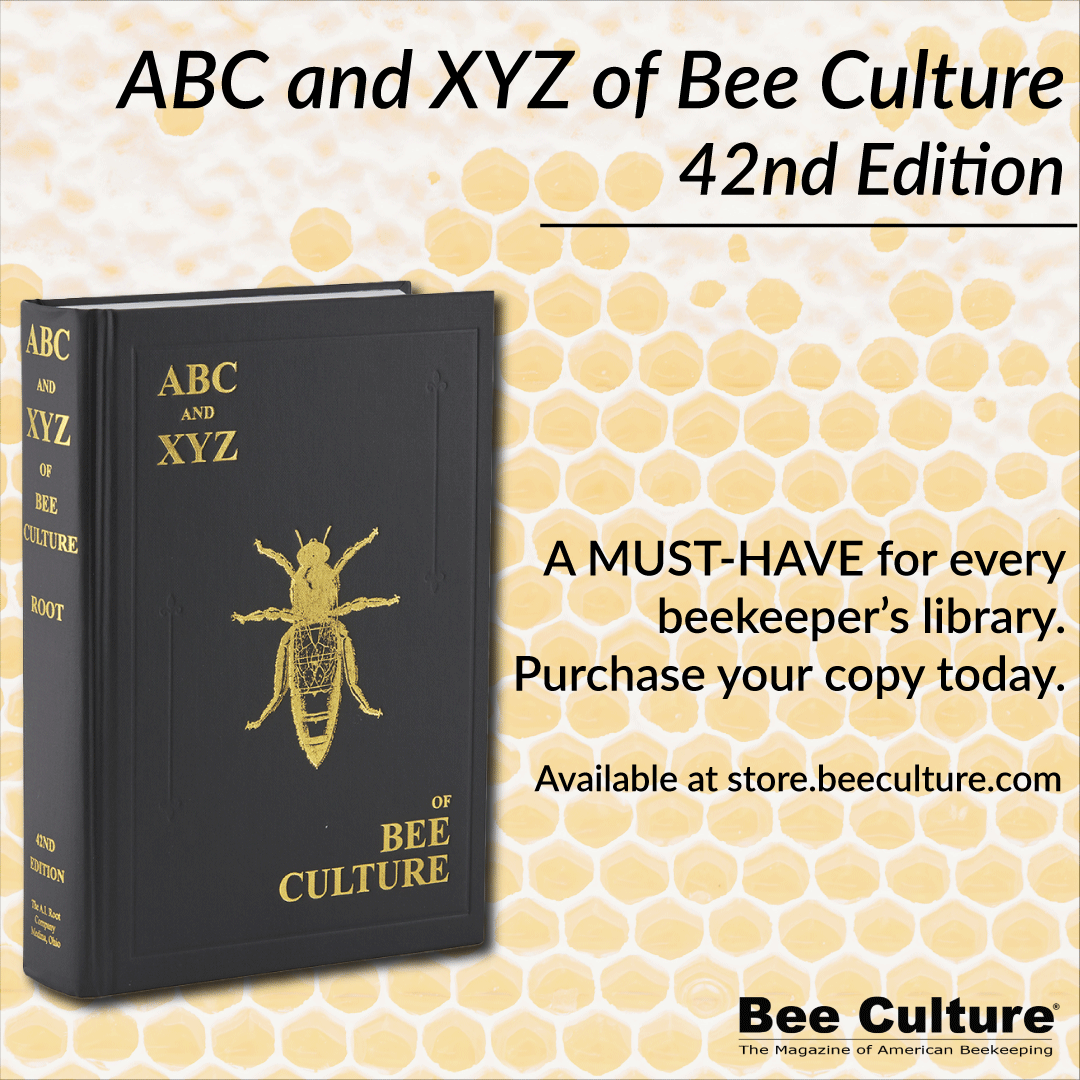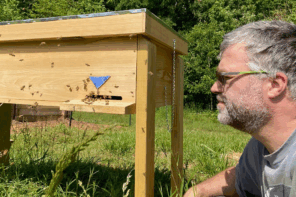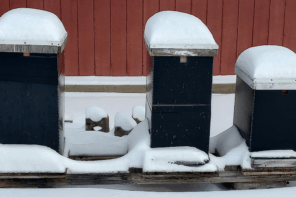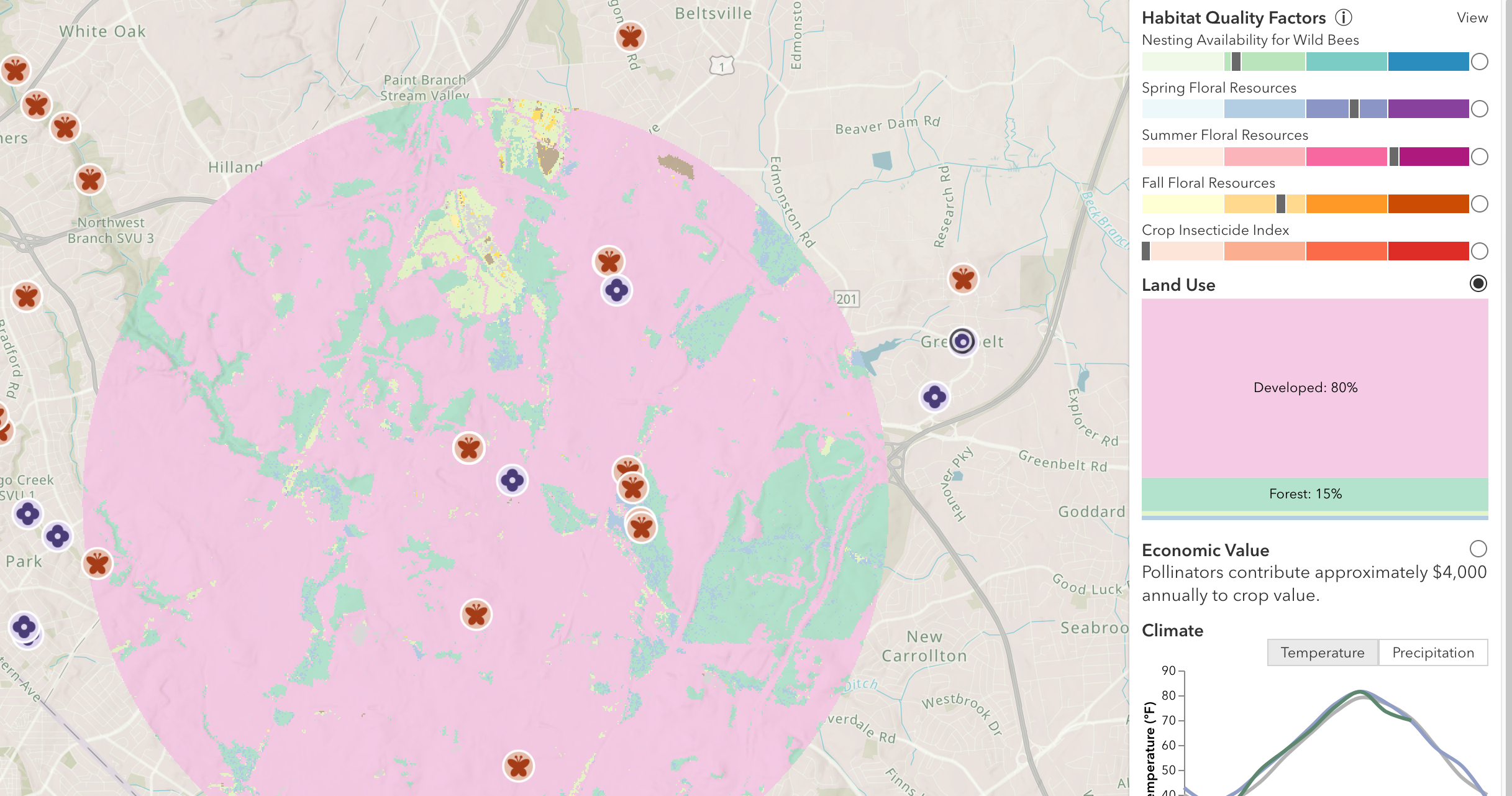By: Brian Lacey
This article originally appeared in the Autumn 2017 issue of BEEKeeping Your First Three Years
Q: I often find large numbers of ants collecting above the inner cover of my hives. Should I be worried about them harming the bees? I brush them all off the hive but they always return. Is there any way I can get rid of them without using some sort of insecticide?
A: In some parts of the world, particularly in tropical and warm temperate climates, ants are capable of overwhelming and destroying even a strong colony. Here in Ontario, however, the ants are less aggressive and are more likely to present a problem for the bee keeper than the bees. There are numerous species of ants that may be found around a hive, but they’re often lumped into two broad categories: “big ones” and “small ones”. Attracted by the warm, dry conditions, they have a tendency to nest in between the lid and inner cover, or between the hive stand and bottom board. Only when a colony is extremely weak will they venture inside the hive itself. Again, they rarely do the bees any harm, but it can be irritating for the beekeeper to get covered in ants while working in the hive. As with most issues facing beekeepers this is an age-old problem to which many ingenious minds have applied themselves in search of a solution. Here are a few of the more common methods of dealing with ants:
1. GRASS CLIPPINGS
This is my preferred method. It’s easy, it’s non-toxic and it works 9 times out of 10. Simply grab a handful of grass and drop it onto the nesting ants. I can’t explain why it works, but for some reason the ants will be gone the next time you open your hive. Some people recommend using fresh spearmint, peppermint, or catnip instead.
2. FIRE
Use a propane torch to scorch the area where the ants have nested. I have tried this a couple of times myself and besides producing a stomach-turning crackling sound and a lingering sense of guilt, it doesn’t seem to work in the long term. In my experience the ants were back within a couple of weeks.
3. CINNAMON
You can either sprinkle a ring of cinnamon around the hive or sprinkle it directly on the part of the hive where the ants are nesting, such as the top of the inner cover. Don’t be stingy with the cinnamon – best to get it in bulk. Be aware that the ring around the colony will need to be reapplied after a rain. I haven’t tried this method, but I’ve heard many reports of success.
4. MOAT
If you use a hive stand that has legs you can place the legs inside tin cans and fill the cans with water or vegetable oil to produce a moat. There are a few problems with this technique: some ants can walk on water, leaves and other debris may fall into the cans creating a bridge, and if you use oil it will eventually be displaced by rain water.
5. BORAX
For a serious or stubborn infestation try this: mix a cup of sugar syrup (2:1 mix if you have it) with a teaspoon of borax. Pour the mixture into empty pop bottles, drill several 1/8″ holes in the upper part of the bottles (above the fluid line so the mixture doesn’t leak out), and place them around the infested colony. It’s important that the holes in the bottle are large enough for the ants to enter, but too small for the bees.
Bear in mind that different situations (climates, species of ant, levels of infestation, etc.) may require different solutions, so don’t give up if at first you don’t succeed. Good luck.
Brian Lacey, B. SC, Research Technician with the OBA Tech-Transfer Program










